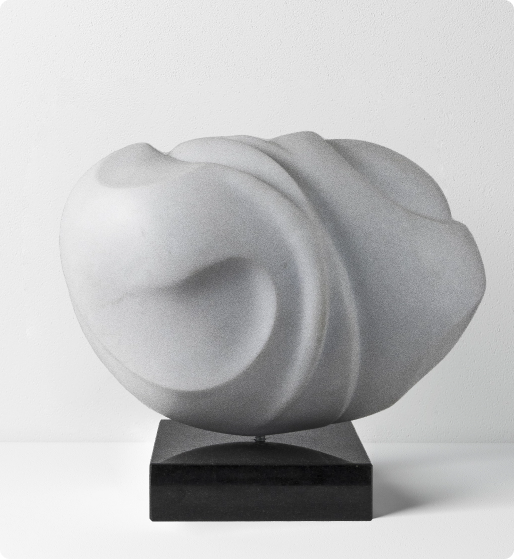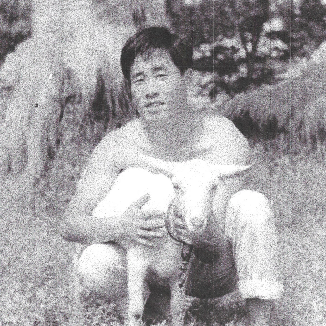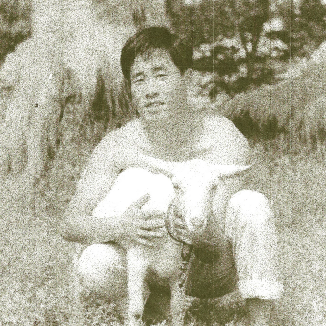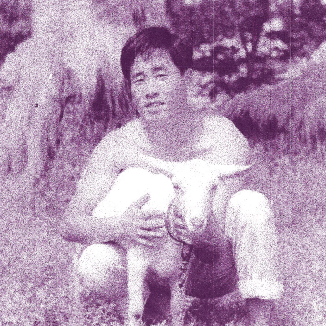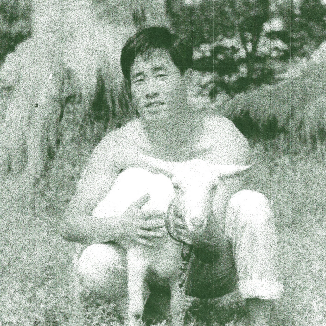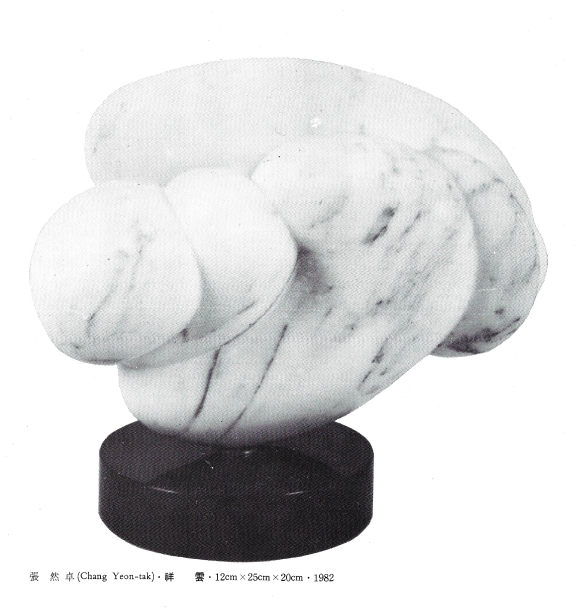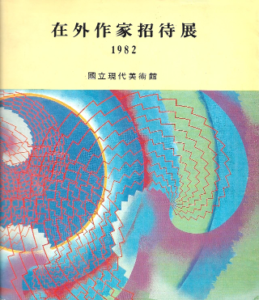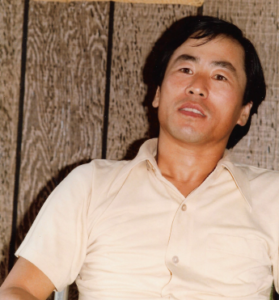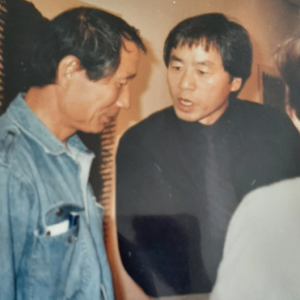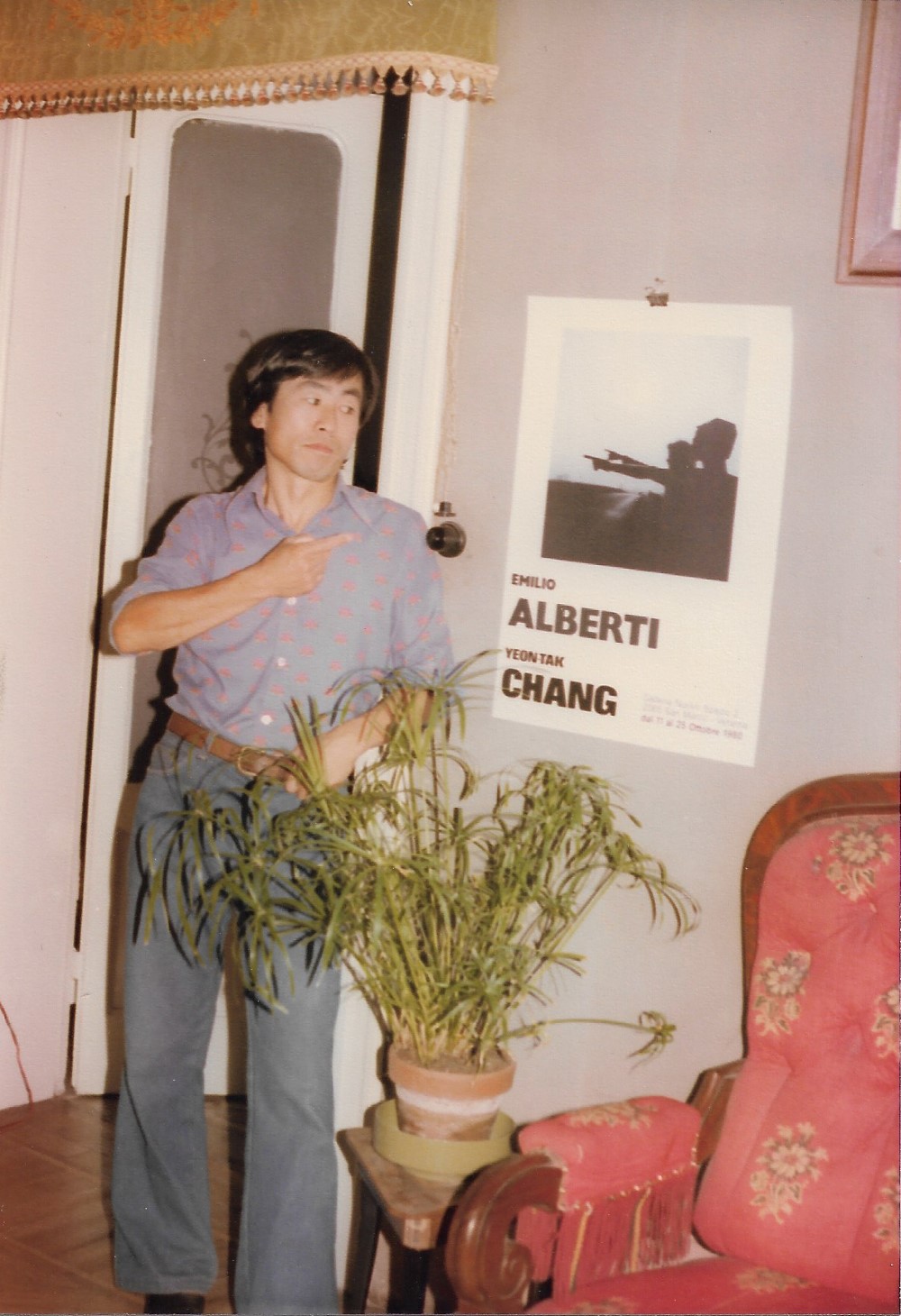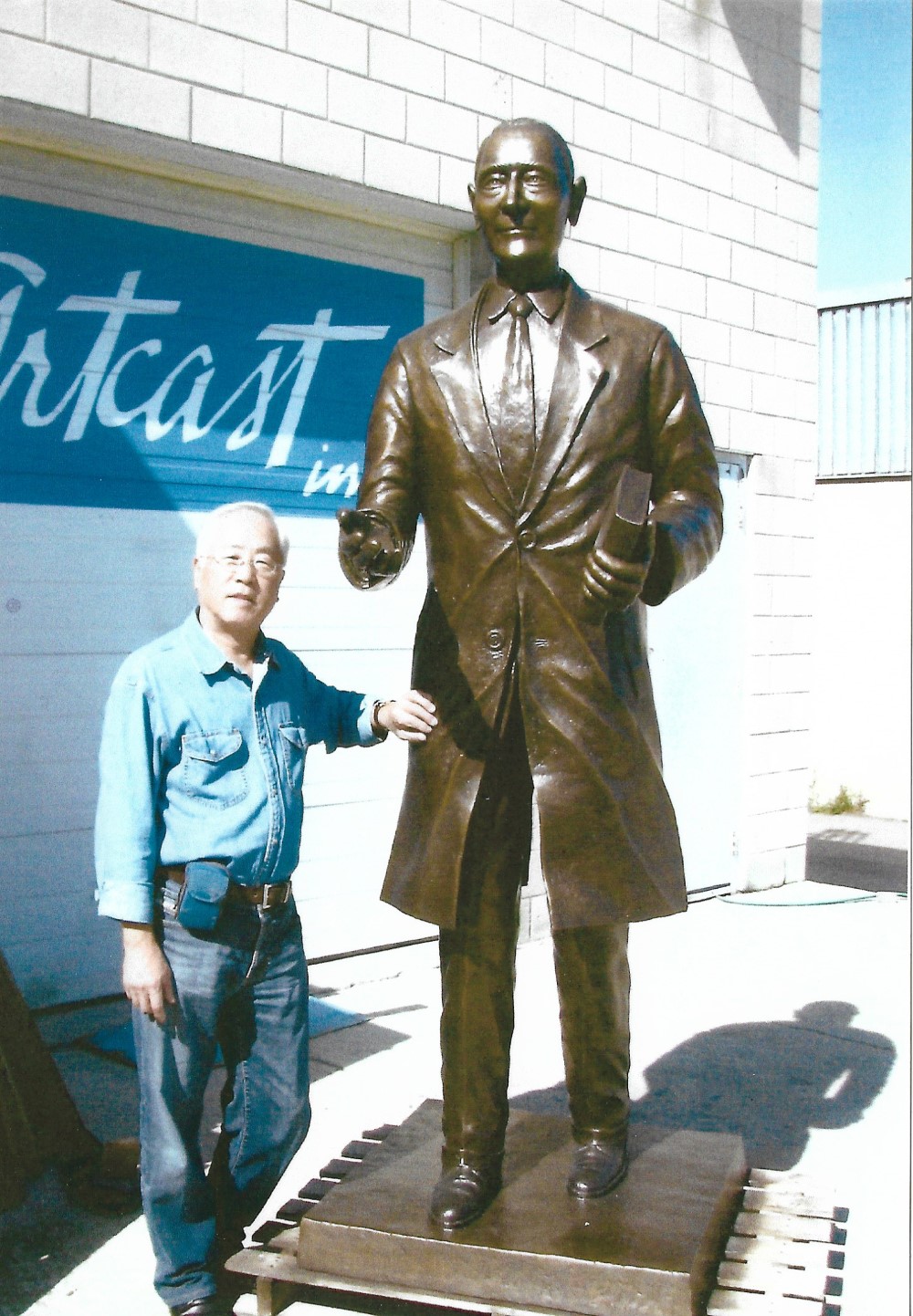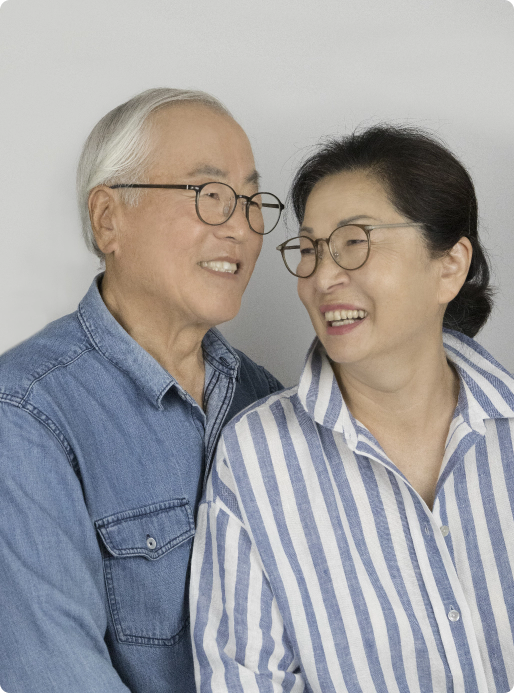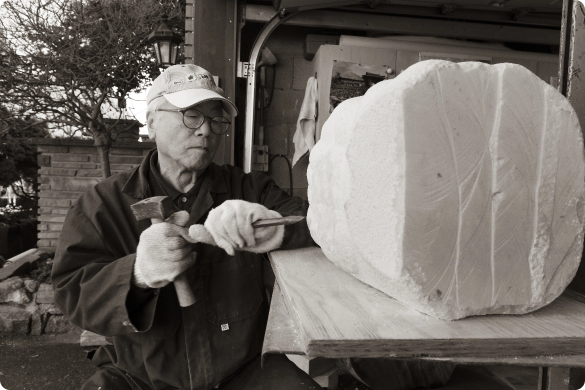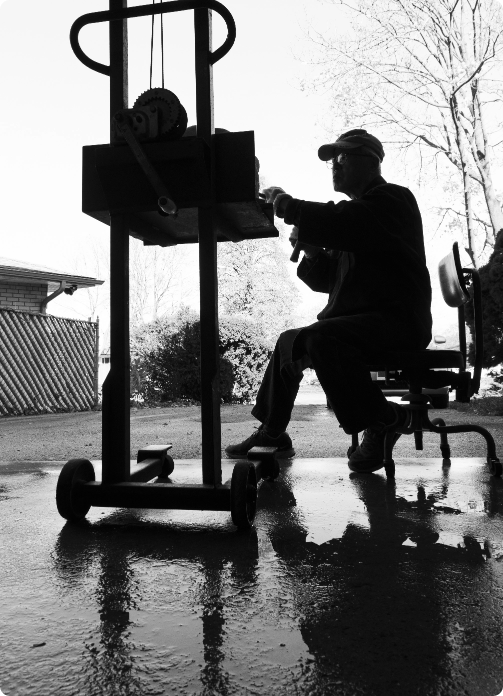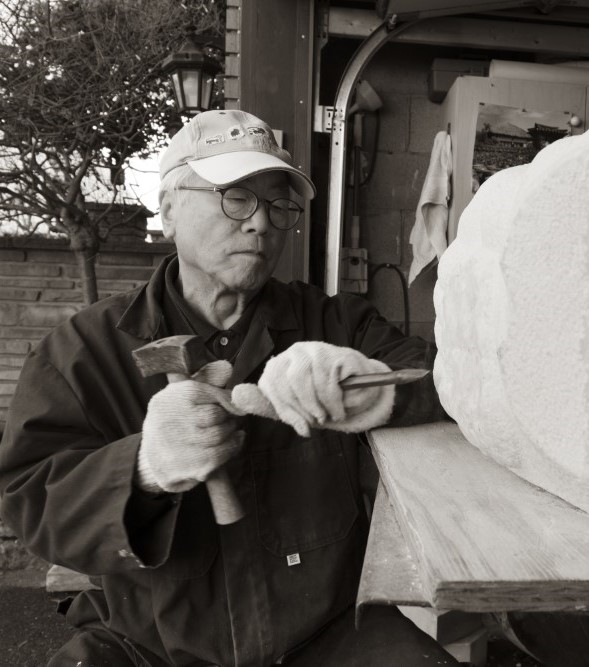
About
His art images transcend culture and time. As an artist, Yeon-Tak’s life has been deeply connected to times when people were a part of the vitality of nature.
As silent echoes, the poetry in these stones are the sound of water, the sight of wind, the texture of clouds.
PORTFOLIO
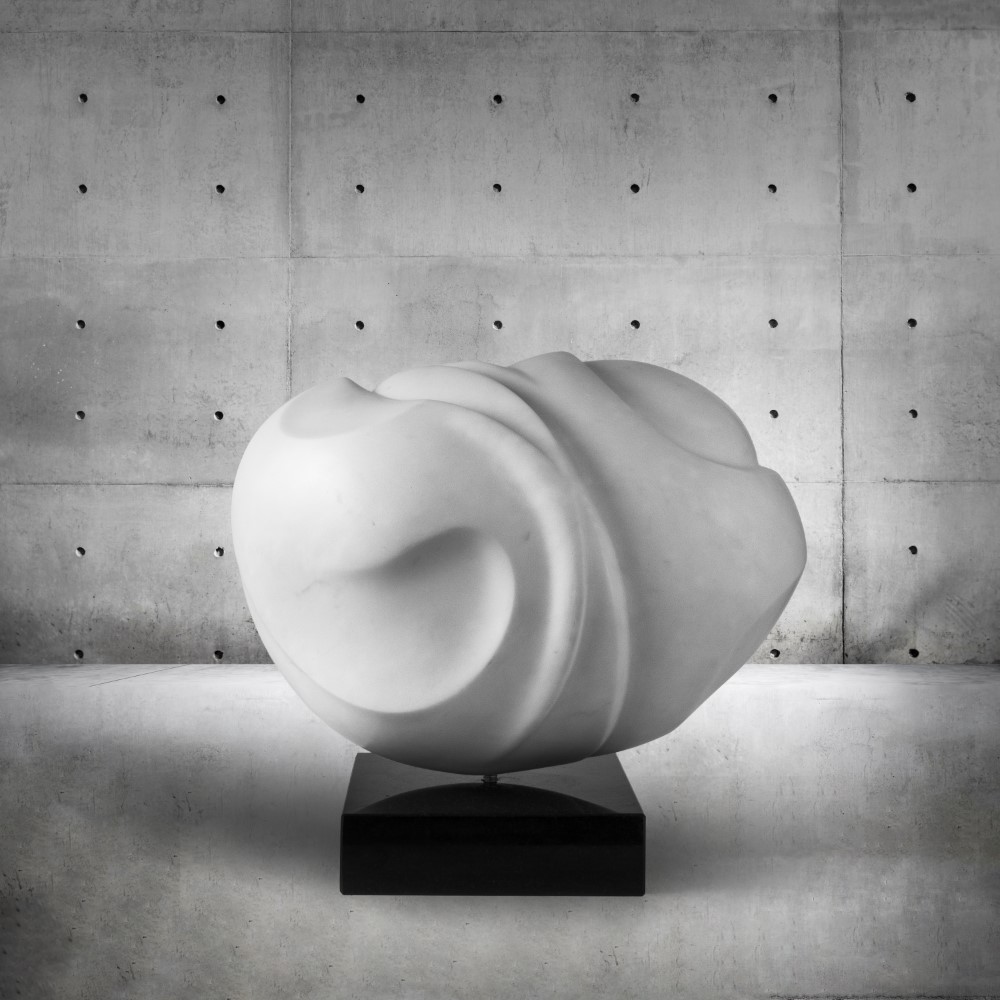
Moonlight
Carrara Marble
15" x 7" x 11"
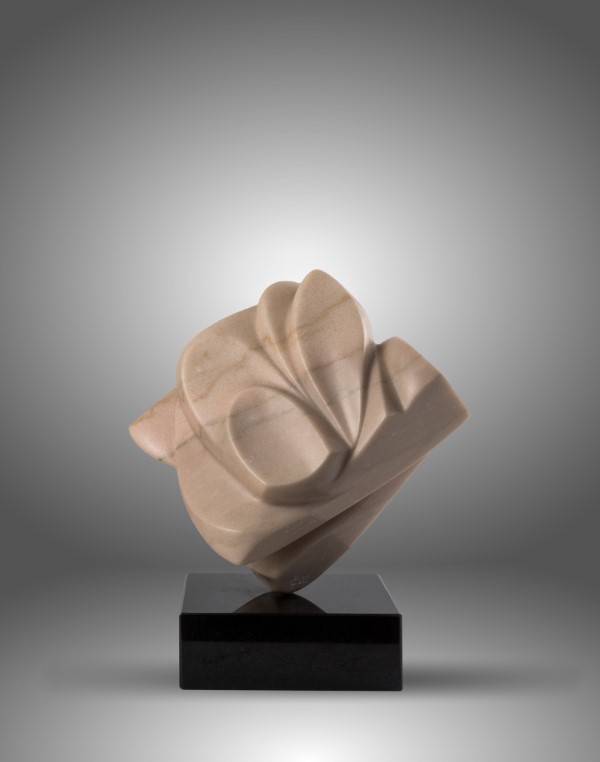
Work 02 (Pink Siena)
Siena Marble
10" x 0.5" x 10"
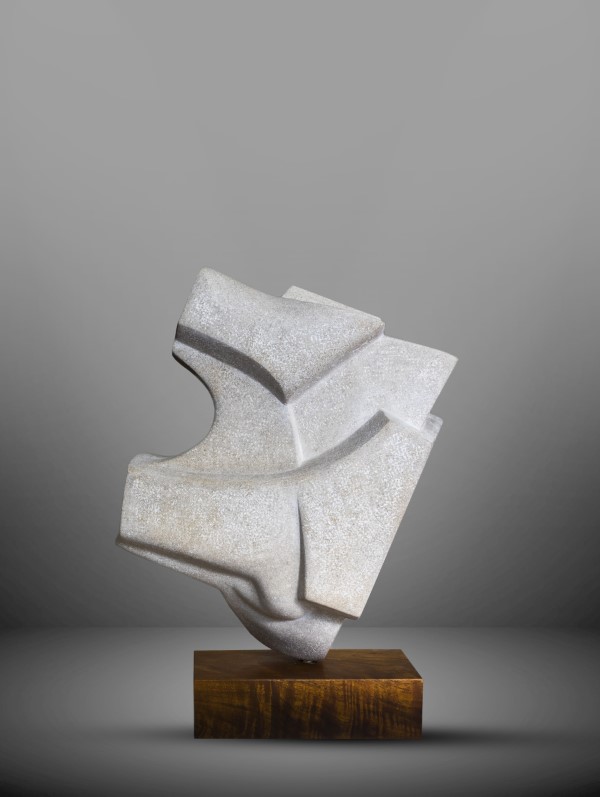
Untitled (1979)
Limestone
13" x 5" x 16"
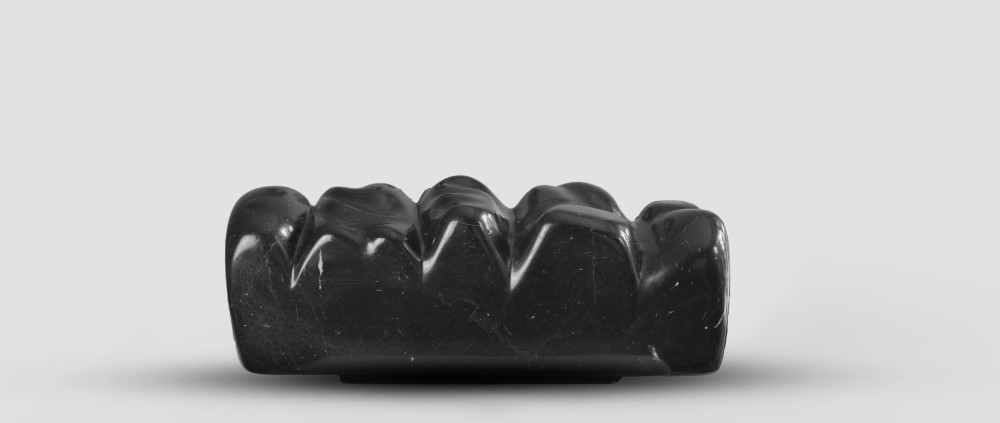
Untitled (2009)
Black Belgium
18.5" x 6.5" x 6.75"
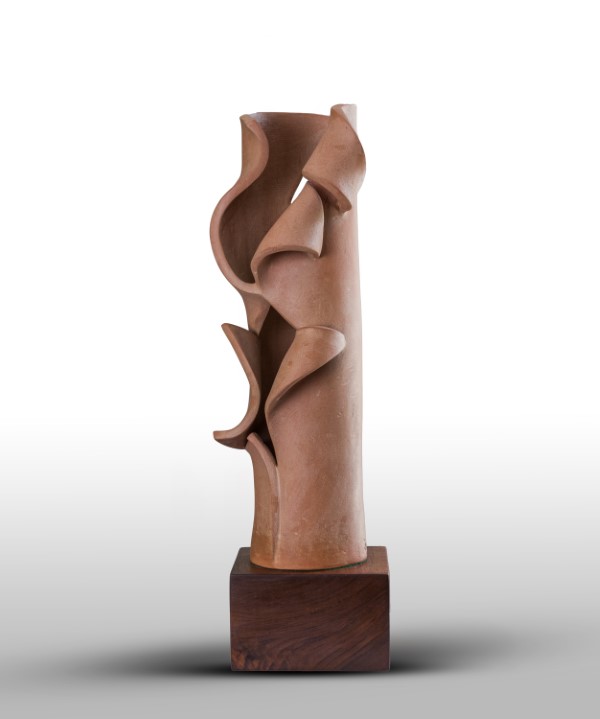
Echo (공명)
Terra-Cotta
7.5" x 6" x 17.5"
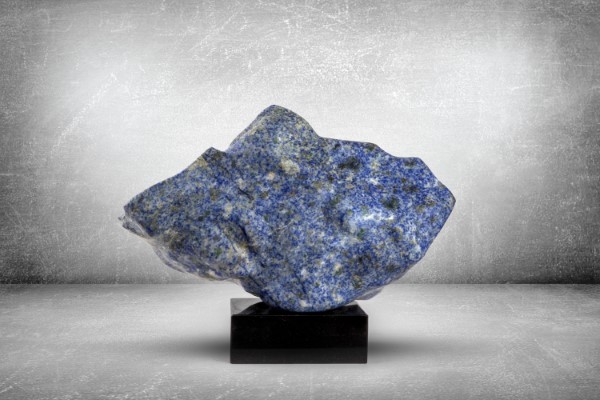
Blue Mountain
Granite
16" x 3.5" x 6"
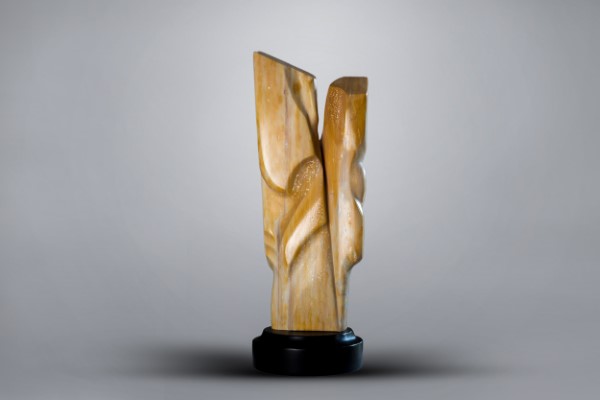
Vertical Siena
Yellow Siena
8" x 3" x 19"
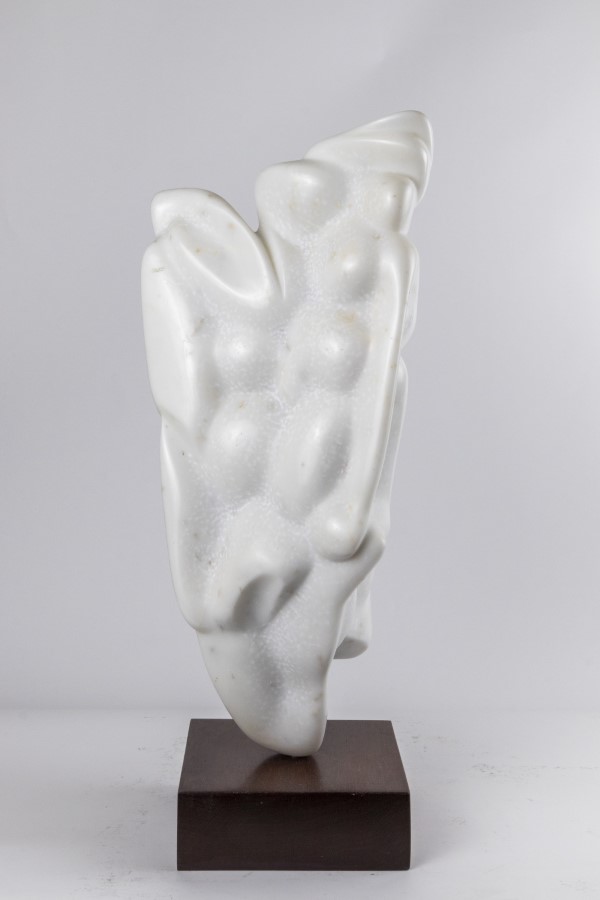
Mountain Passage
Carrara Marble
8" x 7" x 18"
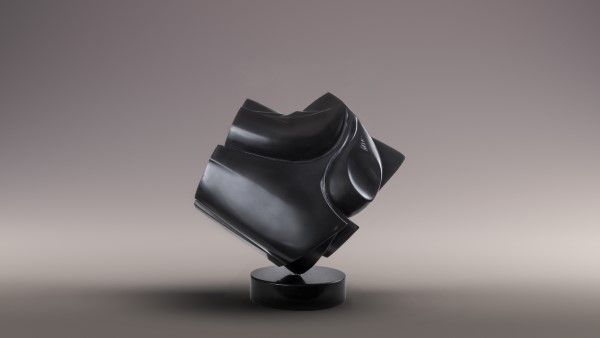
Journey I
Black Belgium
14" x 5" x 14.5"
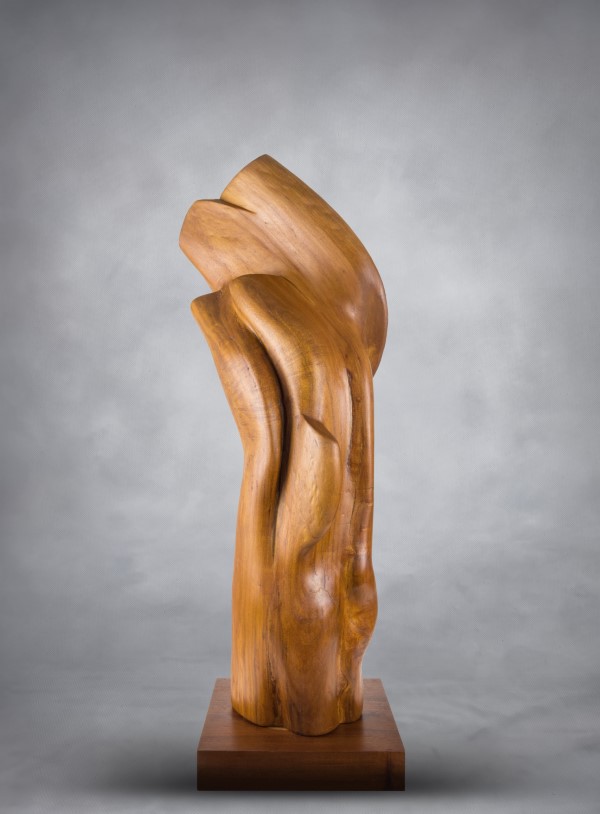
Untitled
Maple
10" x 11" x 31"
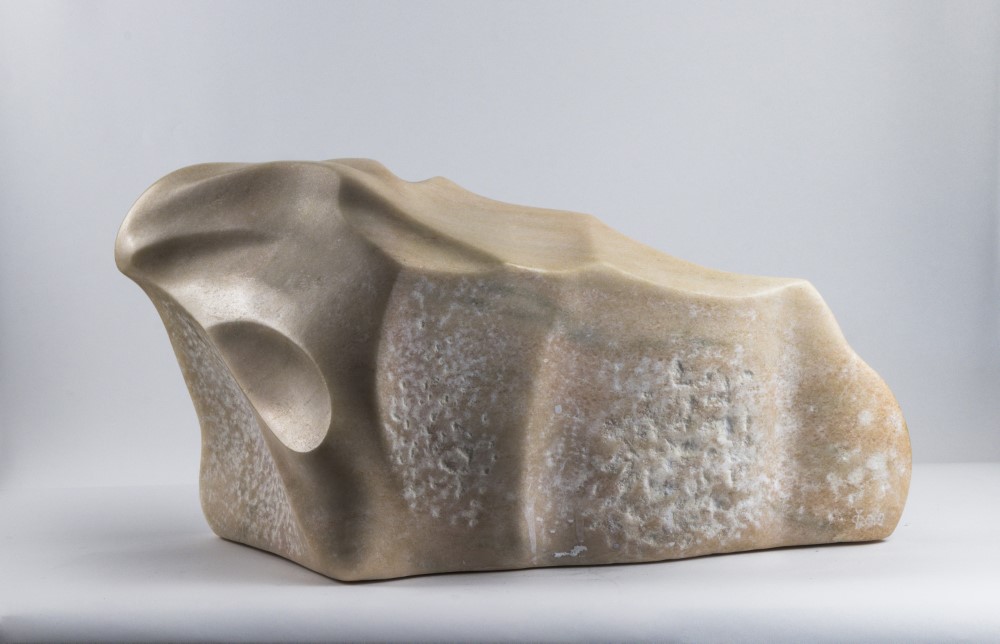
Pink Hill
Portuguese Pink Marble
18" x 8" x 9.75"
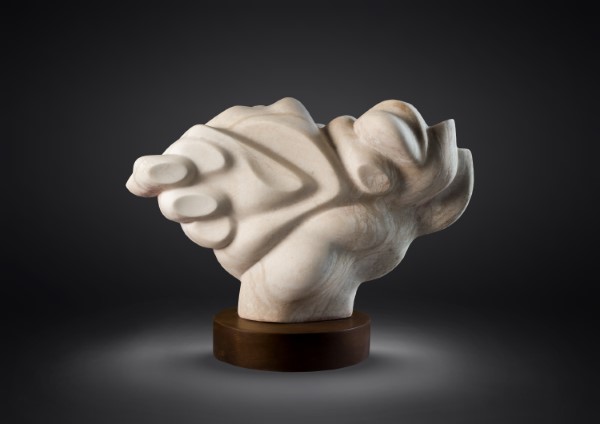
Pink Tree
Siena Marble
18" x 7" x 12"
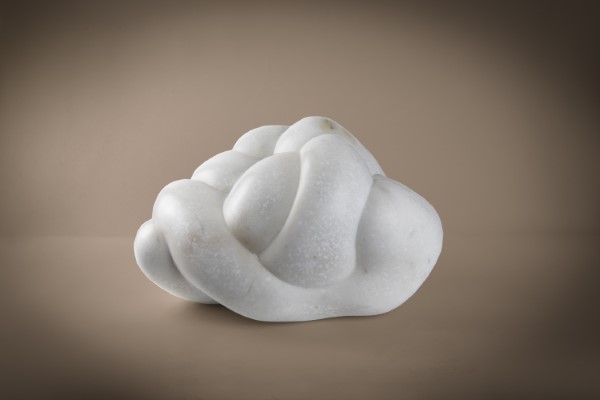
Nest
Carrara Marble
14" x 10" x 9"
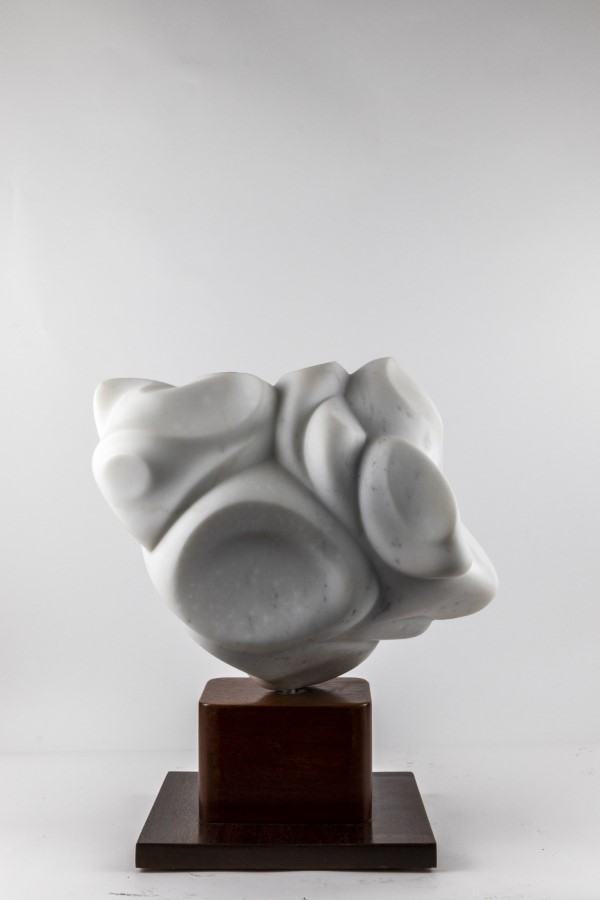
Untitled
Marble
14" x 6.5" x 12"
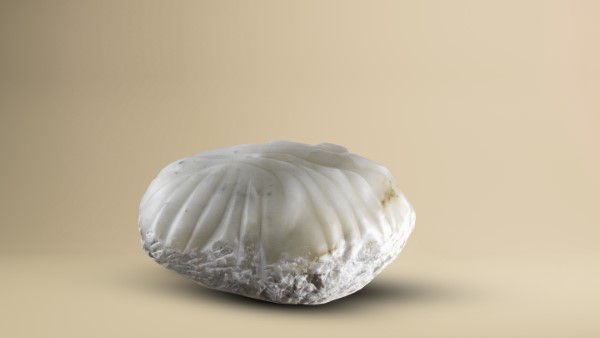
River Head
Alabaster
16" x 14" x 9"
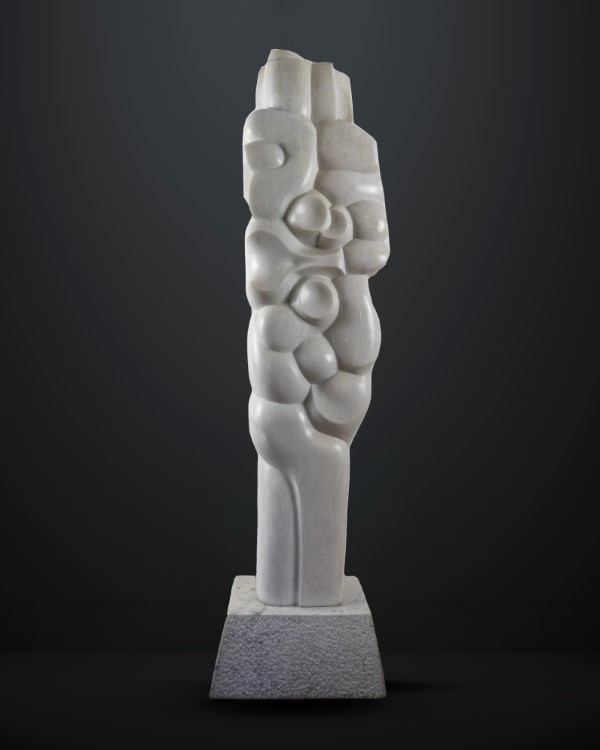
Transfiguration
Carrara Marble
12" x 5.5" x 45"
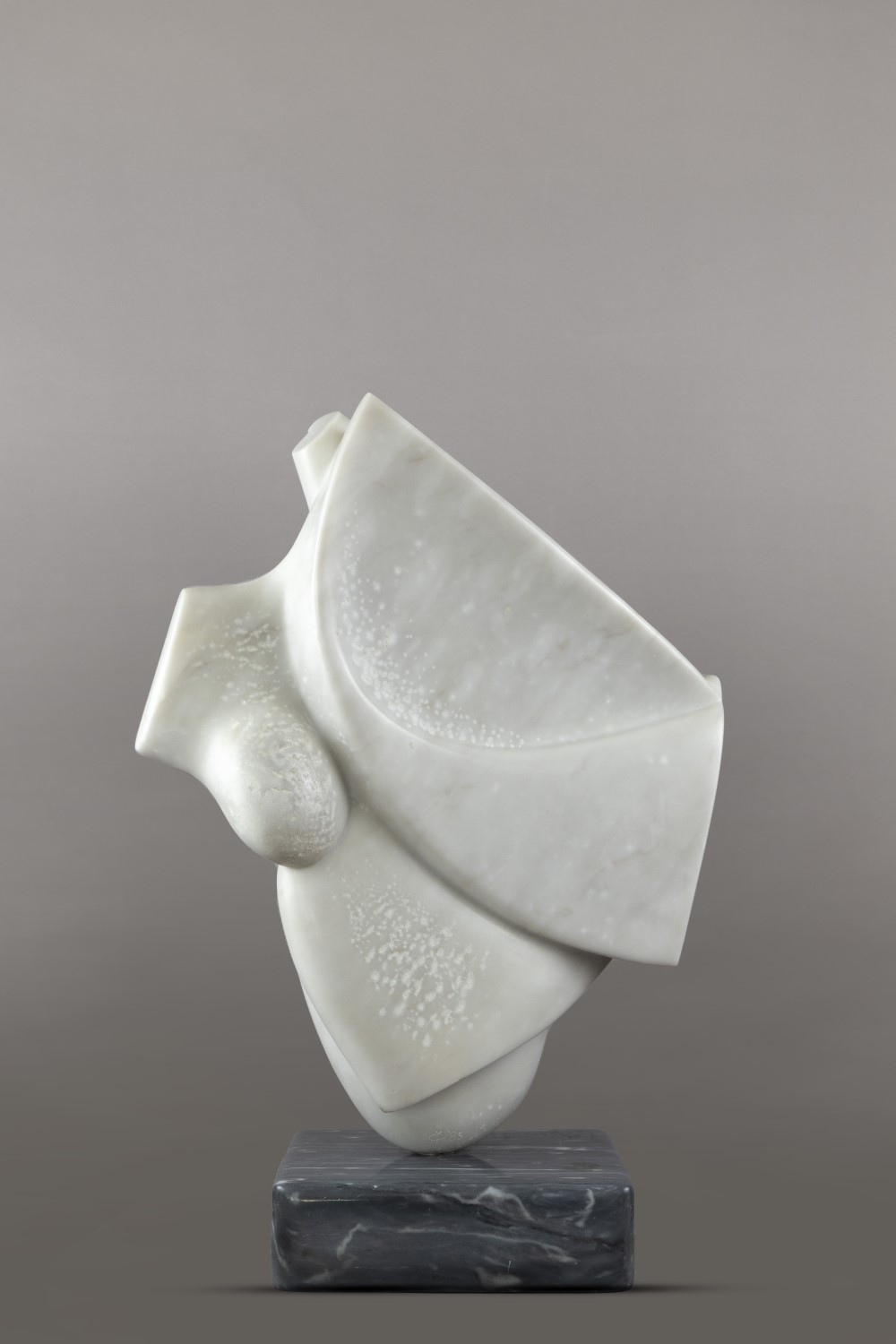
Journey 85
Carrara Marble
13.5" x 4" x 16.75"
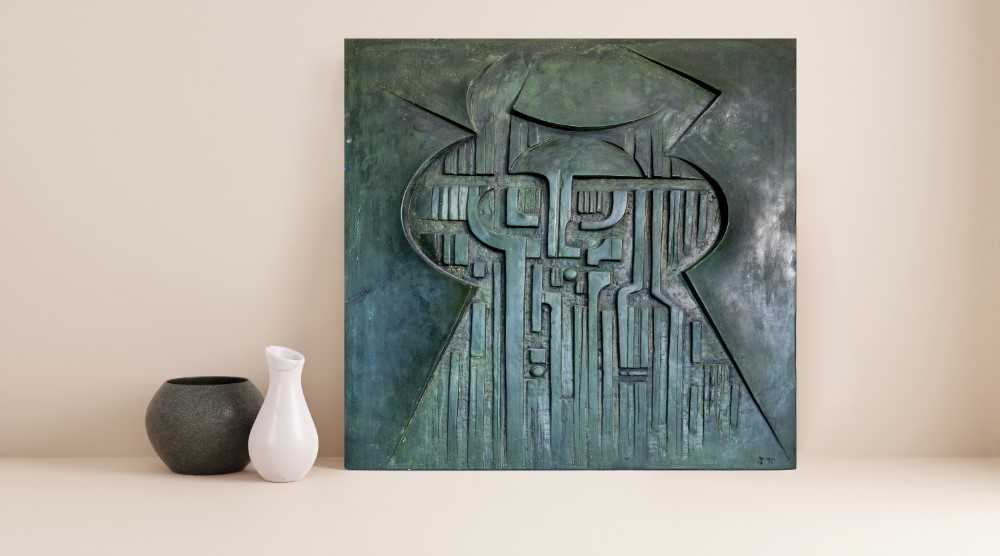
Face
Painted Plaster
20.5" x 31.75"
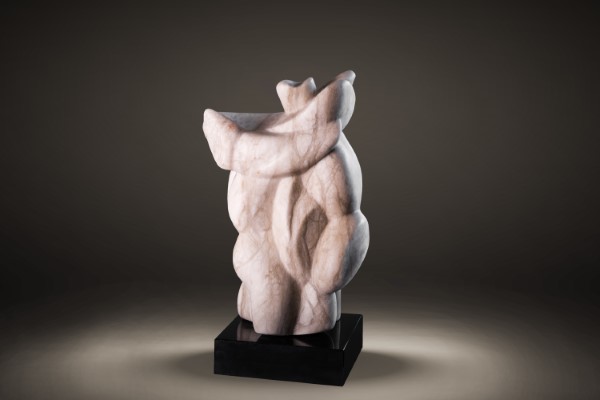
Together
Marble
9" x 7" x 14.5"
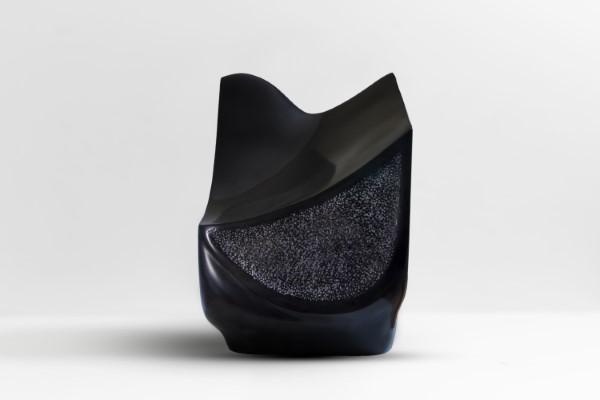
Nebula
Black Belgium
12" x 10" x 17"
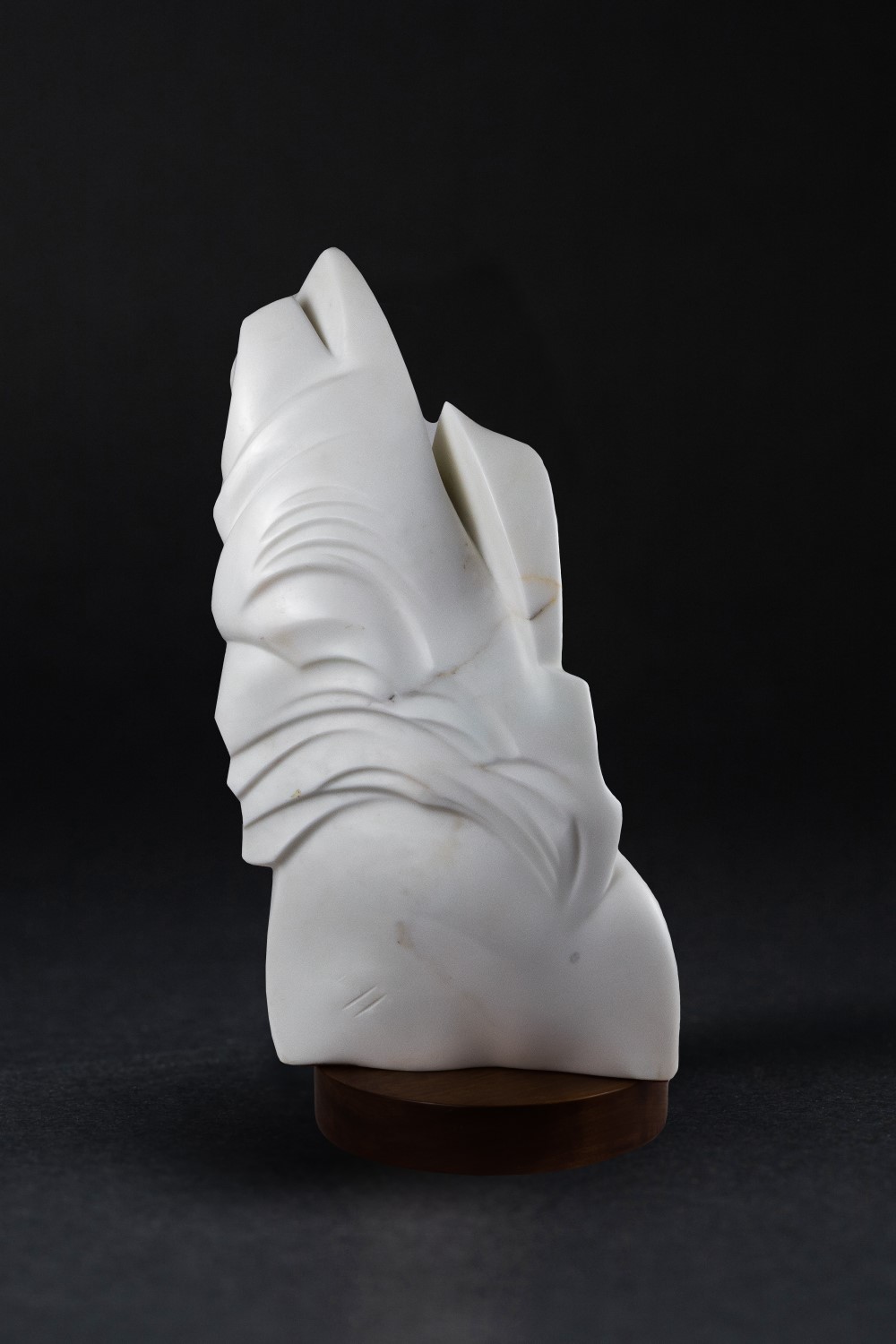
Sodring
Carrara Marble
12" x 8" x 23"
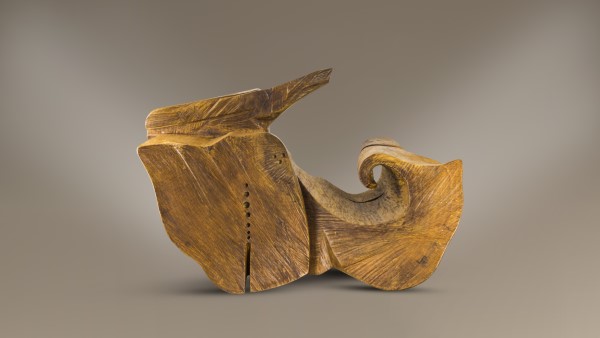
Work 016
Maple
33" x 20.5" x 22"
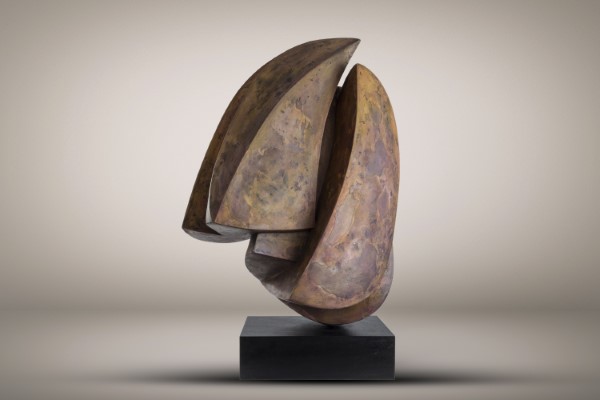
Voyage
Plaster
20" x 12.5" x 26"
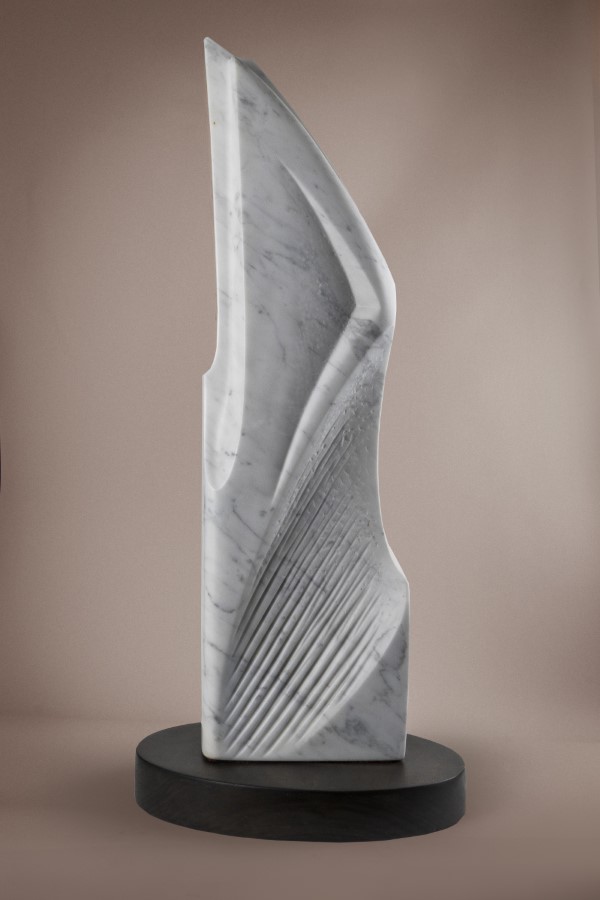
Summit
Marble
8.25" x 3.5" x 26.75"
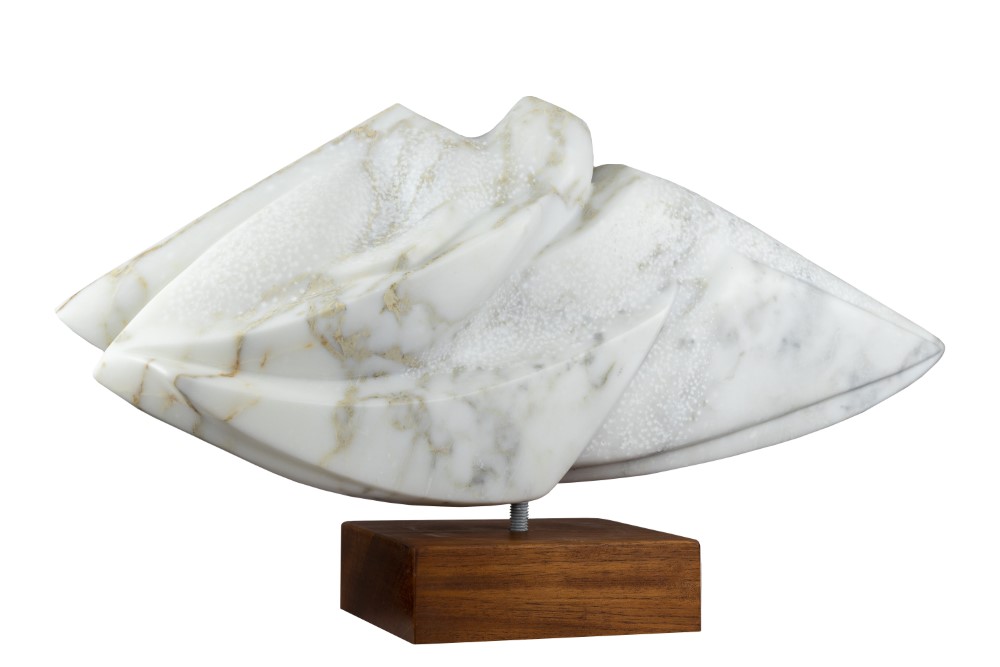
Journey 99
Carrara Marble
25" x 4" x 10"
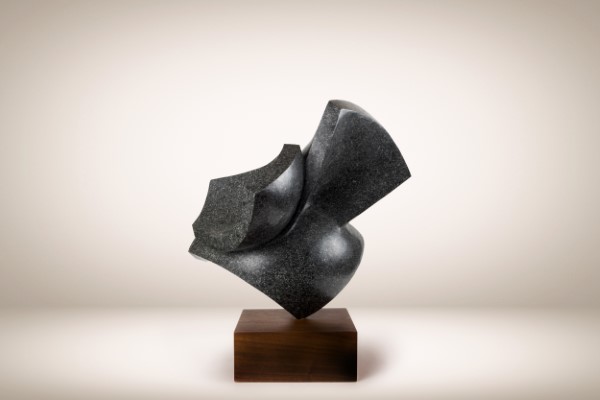
Migration 1988
Granite
18" x 15" x 17.5"
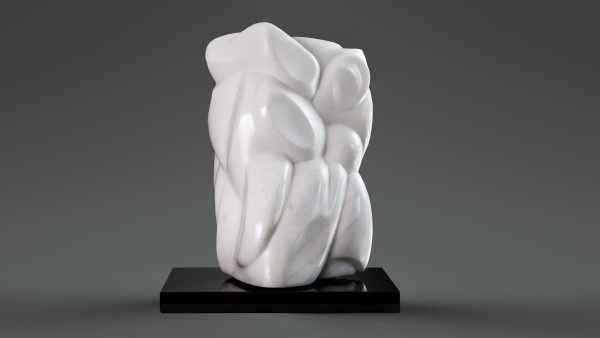
Untitled
Carrara Marble
7" x 6" x 12.5"
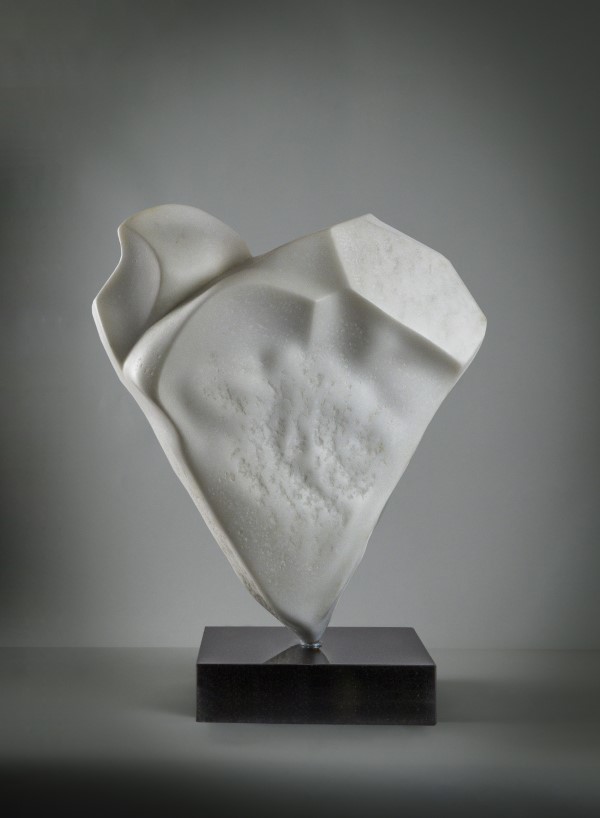
Journey II
Carrara Marble
14" x 4.5" x 17"
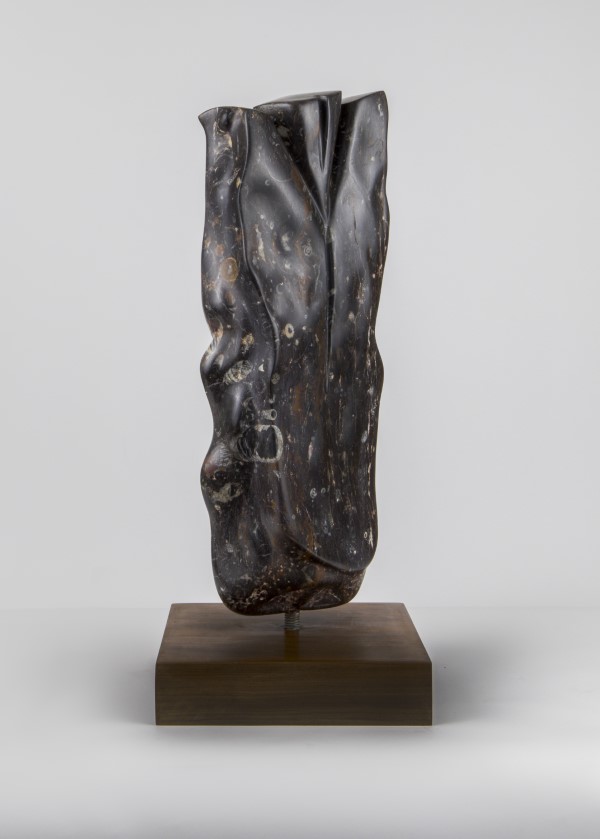
Reflection
Onyx Marble
5.5" x 3" x 17"
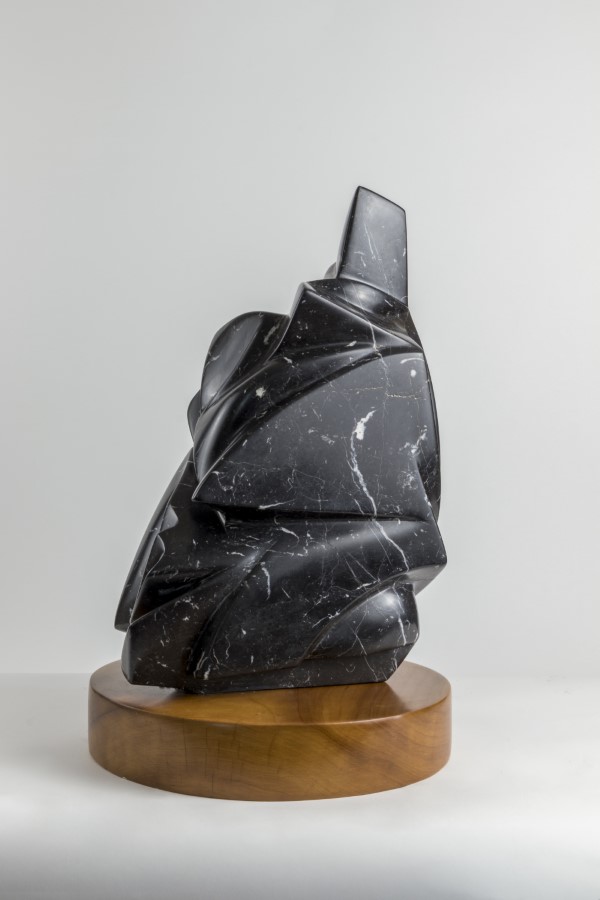
Meditate 02
Black Marble
10" x 4.75" x 4.5"
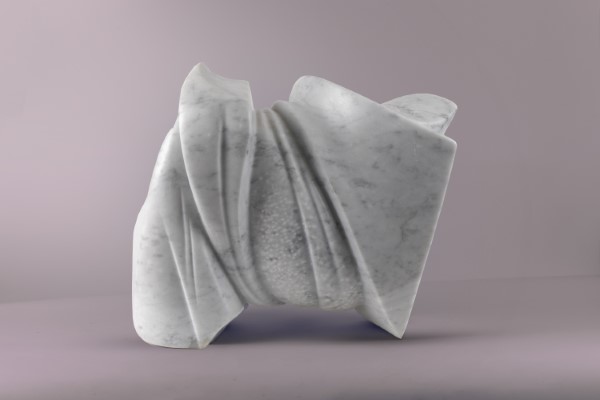
Passage
Marble
12" x 6.5" x 11.5"
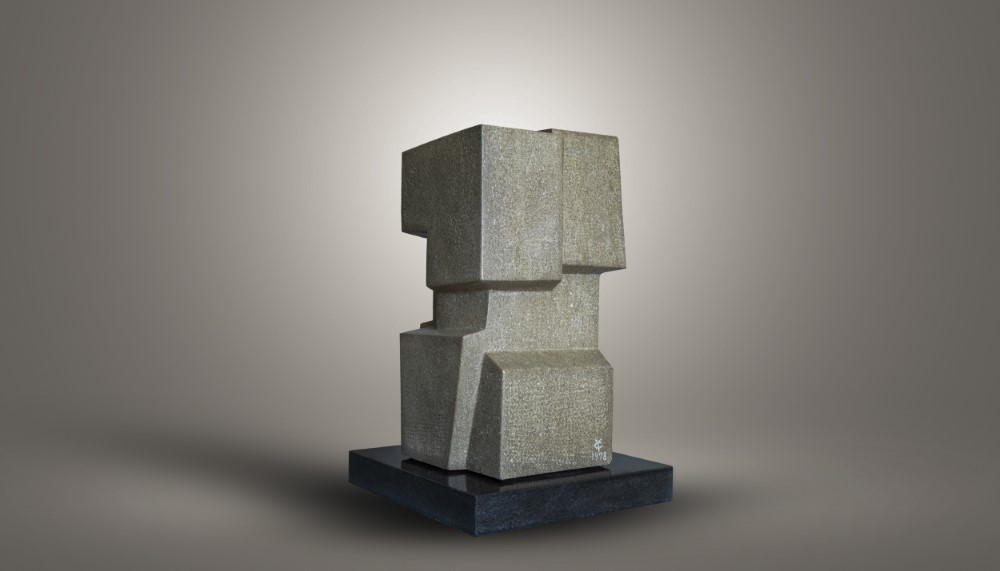
The First Stone Work
Limestone
7.5" x 7.5" x 14"
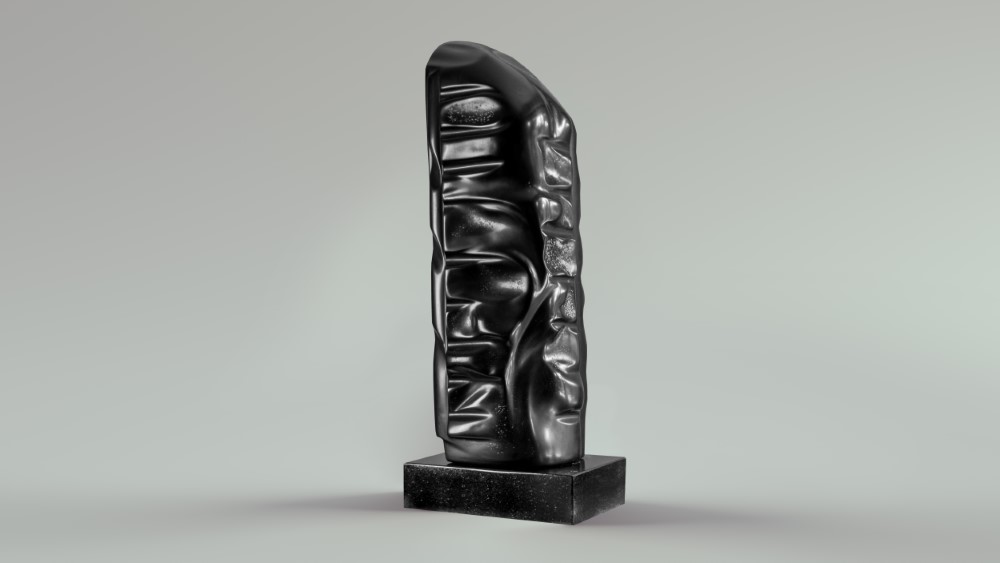
Untitled
Black Belgium
6" x 5" x 18.75"
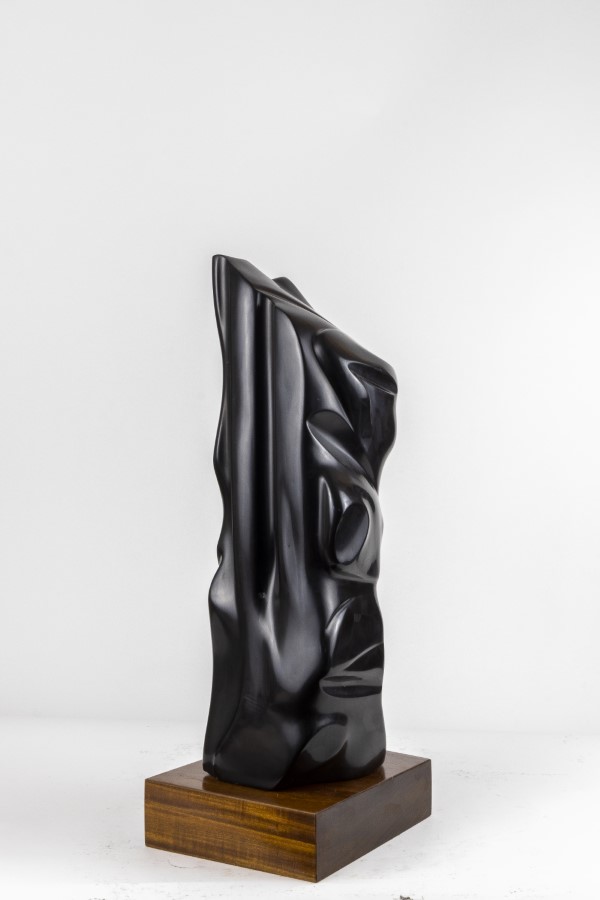
Untitled
Black Belgium
4" x 5" x 13.75"
Articles
Articles below describe the artist’s creation process and philosophies of how nature, intuition are manifested in sculpture

An Endless Journey to Unknown Space
Chisel rhythmically beating on stone like a poet, like the wind. Like a rock, climbing, struggling with self, challenging sculptor and humanity, reaching up to be free. Yeon-Tak Chang’s sculptural images are simple and powerful. The forms are innovative and simultaneously connected to age-old artforms and philosophy. The sculpture is inseparable from poetry. His images carved into the permanence of stone are filled with life bursting out with meaning.
The Resolution of the Paradox
Yeon-Tak Chang has a deep awareness of the balance between kinetic and potential energy. The concepts of freedom and flight are opposed to the density of stone, yet Chang succeeds in releasing marble from its gravitational pull and his forms appear to fly and dance.


The Silent Echo, the Locus of Yeon-Tak Chang’s Arting
Silence, absence of sound that is attended while it is voided.
Knowledge has no end. Life has an end. To chase/pursue knowledge, which has no end, with life, which has an end, is dangerous.
The Weight of Wings
It seems fortunate that wings were not given to human beings.
Human beings do not hope to have wings to fly. Angels, who have the appearance of human beings have wings. For human beings, the dream of wings is the thirst and longing for endless freedom.
In my childhood, I enjoyed flying kites on windy days. I flew the kites that I had made, up into the infinite blue sky, carrying my dream and vision. Then, I was beginning to escape into the endless journey of my life.
The wings of flying kite-birds were waking my sleeping soul.
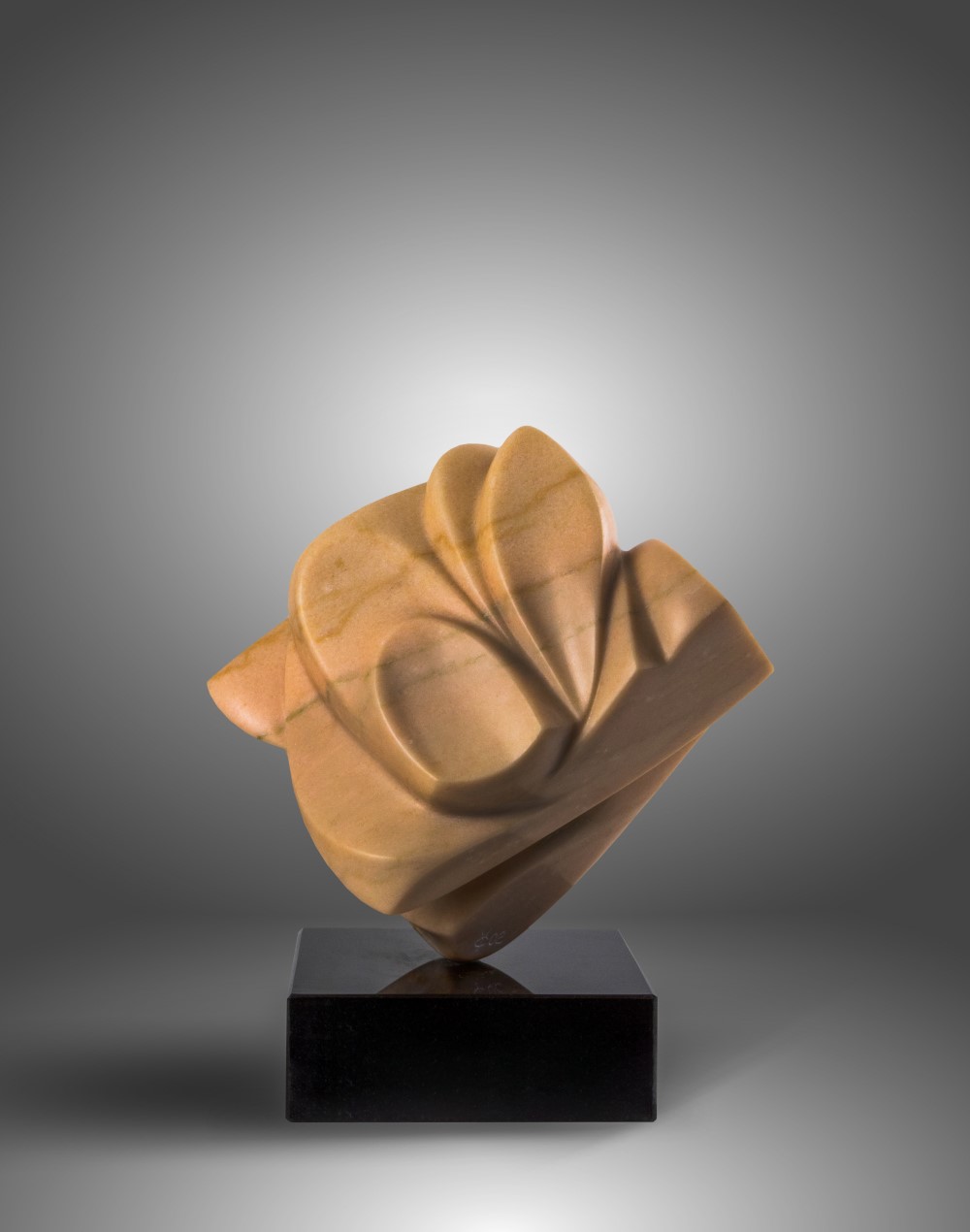

장연탁 조각 전시회
육체적 노동의 양에 따르면 교향악단에서 누가 가장 많이 받아야할까? 바이올린 연주가? 탐파니 주자 혹은 지휘자? 회화, 판화, 건축, 조각등 미술의 쟝느에 이러한 유머를 적용하면, 조각가야 말로 노동에 대해 가장 적은 임금을 받고 있지 않는가 싶다. 톱으로 돌을 짜르고, 망치와 끌로 쪼아대고 그리고 경우에 따라 샌드페이퍼로 표면을 거울처럼 만들려면 조각이야말로 노동집약적 작업이라 하겠다. 그래서 나는 조각 작품 앞에서 연속적인 망치질과 샌딩 작업의 리듬을 들어 보고 조각가의 숨소리와 땀냄새를 맡아 보려고 한다. 조각 작업에 이러한 경애심은 조각가와 감정이입을 경험하게 해준다.
Exhibitions
McDonald Gallery, Toronto, Ontario
Gallery II Mercante, Milan, Italy
Gallery Nuovo Spazio 2, Venice, Italy
Commune di Marino, Second International Biennial Juried Exhibition, Marino/Rome, Italy
Commune di Carrara, Second International Scupltor’s Symposium, Carrara, Italy
Sculptors from Toronto, McDonald Gallery, Toronto, Ontario
Sam Woo Studio, Toronto, Ontario
Korean Contemporary Artists Invitational Show
Sheraton Centre Gallery, Toronto, Ontario
Canadian National Exhibition Art Show, Toronto, Ontario
Second International Art Fair, Toronto, Ontario
Sculptors Society of Canada, Brampton Museum of Arts, Brampton, Ontario
Gallery Gabor, Toronto, Ontario
West Broadway Gallery, New York, New York
Canadian Artists Invitational Show, Setadel Gallery, Toronto, Ontario
Sculptors Society of Canada, Pointe Claire Cultural Centre, Pointe Claire, Quebec
Sam II Gallery, LAKA Group, Los Angeles, California
Oversea Korean Artist Invitational, National Museum of Modern Art, Seoul, Korea
William Whipple Gallery, Marshall, Minnesota
8 Korean Artists From North America, Korean Cultural Services, Los Angeles, California
Bridgestone Gallery, Toronto, Ontario
National Art Centre, Seoul, Korea
’84 Contemporary Art Invitational, National Museum of Modern Art, Kwa Cheon, Korea
Gallery 72, Omaha, Nebraska
Pagani Museum, Milan, Italy
Nina Owen Gallery, Chicago, Illinois
Metropolitan Library Gallery, Toronto, Ontario
Merton Gallery, Toronto, Ontario
Columbus Centre, Toronto, Ontario
Pauline McGibbon Centre, Toronto, Ontario
William Whipple Gallery, Marshall, Minnesota
Ernest Museum of Art, Budapest, Hungary
Suzanne Kohn Gallery, St. Paul, Minnesota
Commune di Castellanza, Varese, Italy
Shinsegye Gallery, Seoul, Korea
National Art Centre, Lak Woo Sculptor’s Society, Seoul, Korea
John B. Aird Gallery, S.S.C., O.S.A., Toronto, Ontario
The Dante Centre, Ravenna, Italy
Gallery 72, Omaha, Nebraska
John B. Aird Gallery, S.S.C., O.S.A., Toronto, Ontario
City Art Gallery, lnterCity Dialogue, Toronto, Ontario
National Art Centre, Lak Woo Sculptor’s Society, Seoul, Korea
John B. Airde Gallery, Toronto, Ontario
Theodore Museum of Contemporary Art, KASC, Toronto, Ontario
Theodore Museum of Contemporary Art, Toronto, Ontario
Kelowna Art Gallery, Kelowna, British Columbia
Canadian Sculpture Centre, Toronto, Ontario
First Canadian Place Gallery, Toronto, Ontario
Joseph D. Carrier Art Gallery, Toronto, Ontario
Marika Jewellery and Fine Art, Banff, Alberta
Galerie Jean-Pierre Valentin, S.S.C. Tour Show, Montreal, Quebec
Korean Cultural Service, New York, New York
Toyamura International Biennial Juried Exhibition, Hokaido, Japan
‘95 World Art Festival Invitational Exhibition, Seoul Press Center Gallery, Seoul, Korea
First Canadian Place Gallery, O.S.A., Toronto, Ontario
Canadian Sculpture Centre, Toronto, Ontario
American Centre, Detroit, Michigan
Canadian Sculpture Centre, Toronto, Ontario
Civic Center, Inchon, Korea
International Sculptor’S Symposium (Korea’s Clay & Fire), Iksan, Korea
Bau-Xi Gallery, Toronto, Ontario
Han Kook Gallery, New York, New York
Art ’98 (Vancouver International Art Fair), Vancouver, British Columbia
Ukrainian Canadian Art Foundation Gallery (KASC), Toronto, Ontario
Hyundai Art Gallery, Seoul, Korea
John B. Aird Gallery (Sculpture 2000), Toronto, Ontario
SSC Member Exhibition, John B. Aird Gallery, Toronto, Ontario (2001 - 2018)
Three Sculptors Exhibition, Dosaan Gallery, Toronto, Ontario
Art Hall , University of East Stroudsburg, PA, U.S.A.
Chang’s Family Art Exhibition, University of East Stroudsbug, PA, U.S.A.
Approaches – John B. Aird Gallery , Toronto
Stone Work – SSC Gallery, Toronto, Ontario
KASC Member – Dosaan Gallery, Toronto, Ontario
Spatial Modes – SSC Gallery, Toronto, Ontario
KASC Member – Paper Mill Gallery, Toronto, Ontario
Harmony Between Man and Nature – SSC Gallery, Toronto, Ontario
Curriculum Vitae
Bachelor of Fine Arts, Seoul National University (1964)
Ontario Collage of Art, Toronto, ON (1980)
Worked on marble sculpture in Pietrasanta and Carrara, Italy (1979-1980)
Member of Sculptors Society of Canada
Member of Ontario Society of Artists
Art Culture, November 1980, by Attilio Lunardi, Milan, Italy
The Korea Times Weekly, March 1981, by Che-Ung Kim, Seoul, Korea
The Korea Times Toronto, May 19, 1982 by Mee-Rai Cho, Toronto, Ontario
Art Speak, May 1982, by Palmer Poroner, New York, New York
The Independent, October 1983, by Anne Tyler, Marshall, Minnesota
Merit Award, Korean Contemporary Art Exhibition, The Chosun-Ilbo, Seoul, 1964
Korean Heritage Award, Toronto, 1983
Vogel Architect Award, Sculptor Society of Canada, Toronto, 1993
RCA Award, The Jacobine Jones Foundation, Toronto, 1994
Museum of Modern Art (Pagani Museum), Milan, Italy
National Museum of Modern Art, Seoul, Korea
Cadillac Fairview Corporation Ltd. Toronto, Ontario
Ford America, Omaha, Nebraska
Southwest State University of Minnesota, Marshall, Minnesota
St. Sosa Lee Roman Catholic Church, Etobicoke, Ontario
Contact
We are here to answer any questions you may have about the artist Yeon-Tak Chang or his arts. Reach out to us and we will respond as soon as we can.

Project: YTChang.art
- Project Director: Sunny Gallery (sunnygallerytoronto.com)
- Website Development: Webonology (webonology.ca)
- Photography: Kyungmin Kate Lee | Contents Writing Sunhee Kim | Graphic Design Selina Jin
